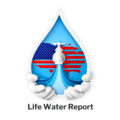The U.S. Department of Health and Human Services (HHS) has suggested a reduction in the amount of fluoride added to public water systems. The debate over fluoridation has been ongoing and contentious, and the Environmental Working Group (EWG) has recently urged the HHS to lower fluoride levels even further than proposed, after carefully reviewing the evidence of fluoride’s benefits and potential toxicity.
While fluoride does strengthen teeth and make them more resistant to cavities, there are significant drawbacks to fluoridated water compared to direct treatments such as fluoridated toothpaste. Fluoride replaces calcium in teeth and bones, potentially leading to weaker bones and tooth damage known as “fluorosis,” which affects an estimated 40 percent of Americans (EWG).
Toothpaste and topical treatments have been deemed safer alternatives by the European Union due to these risks. A review by the U.S. Centers for Disease Control and Prevention (CDC) found that water fluoridation and toothpaste provide similar levels of protection, particularly in adults. It’s important to note that although fluoridated toothpaste contains significantly more fluoride than drinking water, it can be used safely to deliver benefits directly to the teeth while minimizing ingestion.
Drinking water is an imprecise means of delivering fluoride, as it cannot be tailored to different demographic groups. Certain groups, such as pregnant women, athletes, and people with diabetes, may ingest more fluoride due to their higher water consumption. The proposed lower fluoride concentrations in drinking water still pose a risk, especially for vulnerable groups like babies and infants who may consume excessive fluoride through powdered formula mixed with water. Approximately 20 percent of babies under 2 years old may ingest too much fluoride, as they consume significantly more water than adults.
The first two years of life are critical for babies’ growth, and excess fluoride can have detrimental effects on their developing bones and teeth. Additionally, around 10 percent of older children may also exceed safe fluoride levels through the combination of drinking water, toothpaste, and other sources.
Despite the prevalence of fluorosis in around 40 percent of Americans, with most cases being mild, EWG believes it is wise to minimize fluoride ingestion until the safety of the proposed lower levels can be guaranteed. Studies conducted in regions with high naturally occurring fluoride levels have also indicated potential neurotoxicity, hormone disruption, and increased rates of rare bone cancer in boys.
While the move to lower fluoride levels is a positive step, EWG asserts that federal agencies have not fully assessed the risks of fluoride or explored safer methods of administration. The Environmental Protection Agency’s toxicity assessment, which concluded that adding fluoride at 0.7 parts per million is safe, was based on questionable assumptions. The primary focus should be on applying fluoride to teeth rather than introducing it to the body. Surface application, such as toothpaste, is effective and safe as long as children are taught to spit it out. To ensure safety at home
EWG offers several key fluoride tips for water drinkers:
- Refrain from giving fluoride to babies, as there is no evidence of benefits before teeth emerge. Avoid mixing powdered or concentrated baby formula with fluoridated water.
- Children under two should not use fluoridated toothpaste.
- Use a smaller amount of toothpaste (pea-sized) for older children who can rinse and spit reliably.
- Consider fluoride rinses instead of chewable tablets if a supplement is necessary, to minimize ingestion.
- Inform your tap water provider about the new federal guidance if you reside in an area with fluoridated water. Fluoride levels should not exceed 0.7 parts per million.
Overall, while the government’s proposal to reduce fluoride levels in drinking water is a step in the right direction, EWG believes it falls short and encourages individuals to take precautions at home
How to use a water report?
Here are some steps to using a water report:
- Obtain the water report: You can usually obtain a copy of the water report from your local water utility or the Environmental Protection Agency (EPA) website.
- Then go to www.LifeWaterReport.com and get a TRUTHFUL water report and compare the two.
- Then look at the multiple solutions Life Water Report provides and choose the best one for your
Family
Remember that it is you, and only you, that can make the decision to know what’s in your water, and then be proactive and protect your Family!
